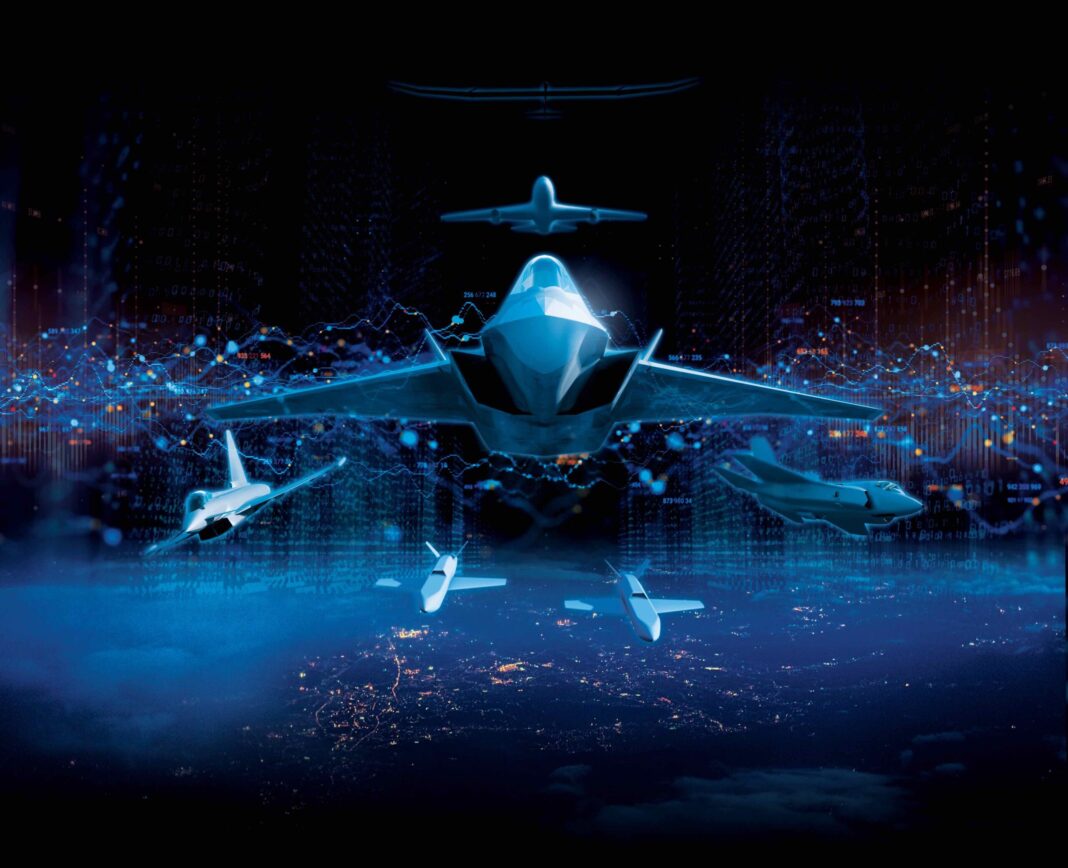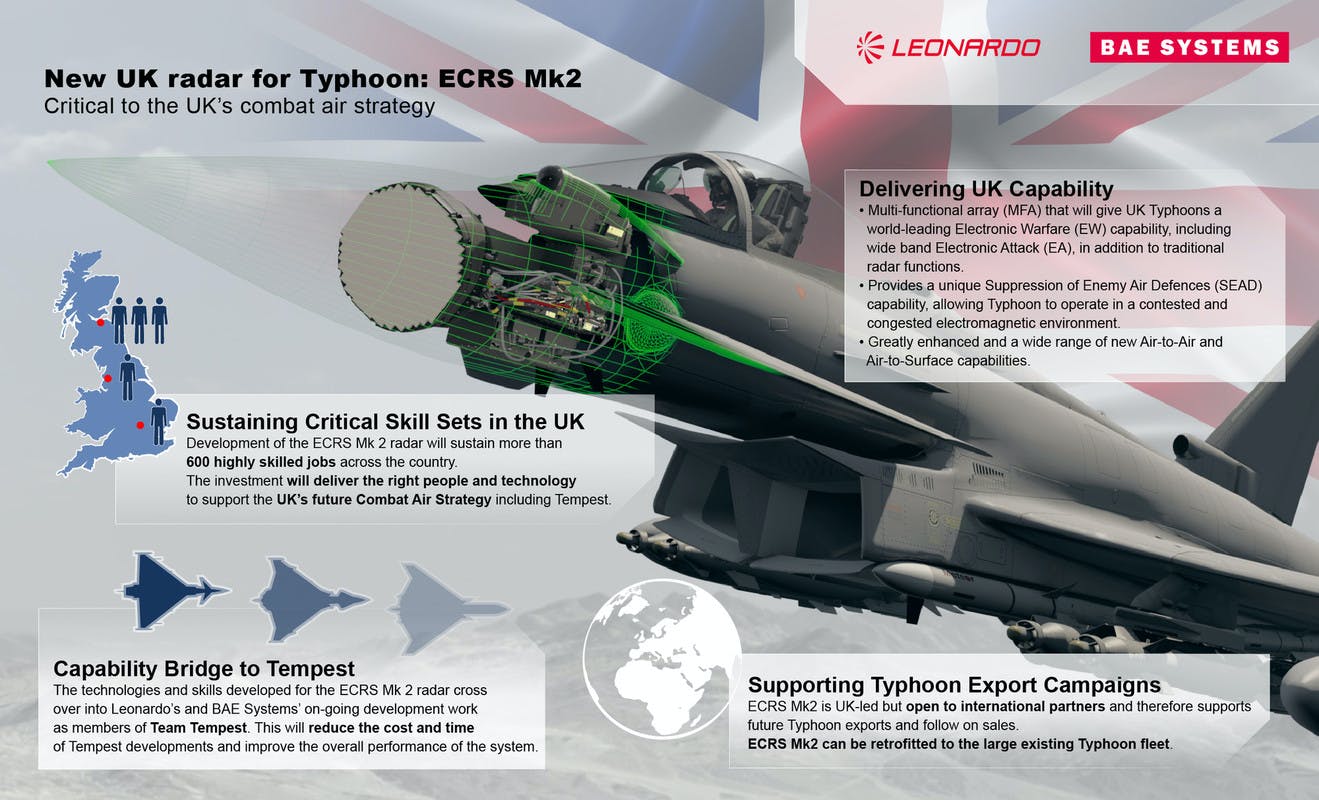The UK Ministry of Defense published its Defense Equipment Plan 2021 – 2031, which sets out the roadmap for the modernization strategy of its Armed Forces.
This equipment plan, therefore, reflects new investment projects involving significant improvements in capabilities, but also reductions in areas that are less aligned with its new strategic direction, expressed in its «Global Britain» vision.
The investment plan impacts all branches of defense, but in this note, we will focus mainly on the air dimension, with some mentions to other branches that cross it, such as space or cyber defense.
Royal Navy
The Naval Command will spend some 38.1 billion pounds sterling (almost USD 52 billion) on purchasing and modernizing equipment over the next 10 years.
ASW assets
The Navy’s AW-101 Merlin helicopters, which are the primary anti-submarine means embarked on RN ships, will receive modernization and cell reinforcement work to extend their operational life from 2029, when they should begin to be replaced, to 2040. In addition, they will be given the added capability to deploy anti-mine assets.
A new light anti-submarine torpedo will be developed to replace the Stingray, to equip surface units and anti-submarine warfare (ASW) aircraft.
Embarked Fighter Wing
On the carrier side, the HMS Queen Elizabeth Strike Group, based on the F-35B Lightning II and Merlin helicopters, is ready for deployment and operational certification, having achieved Initial Operational Capability (IOC). HMS Prince of Wales was accepted into service and began trials with the F35B, following in the footsteps of its sister ship.

Royal Army
Army Command will receive £ 41.300 million (about USD 56 billion) in equipment and improvement programs over the next 10 years. Much of that money will go toward improving rapid deployment capabilities and increasing tactical mobility, to the detriment of traditional heavy forces and large troop contingents.
Electronic warfare and cyber defense capabilities will be significantly strengthened, as will Intelligence, Surveillance and Reconnaissance (ISR) capabilities by expanding and improving the use of tactical UAS such as the Watchkeeper. Large numbers of mini-drones will also be incorporated as part of the «Aquila» project.
Helicopters
Within the helicopter category, the document states that the AH-64 Mk1 Apache fleet will be modernized with «state of the art» technology by 2025, in order to keep the fleet operational until 2040. In addition, 50 new units of the E variant «Apache Guardian», similar to the US Army’s version, are being incorporated, but batch 6 will come with their own modifications. Such as a national self-defense system and modifications for embarked operations. The first 10 units have already been received by the United Kingdom.

Regarding the program to incorporate a new medium helicopter to replace the Puma HC2s, it is clarified that it should begin in the middle of the decade, but no specific date is specified.
Finally, the older CH-47 Chinooks will continue to be decommissioned and replaced by new cells. The first 14 new-build units have already been ordered from Boeing.
Royal Air Force
The Royal Air Force (RAF) will have £36.2 billion (more than USD 49 billion) to invest in the acquisition of new equipment, as well as to modernize existing equipment, over the next 10 years.
As stated in the equipment plan document, the new investments are focused on making the Royal Air Force (RAF) one of the most technologically innovative, productive, and lethal air forces in the world.
This will be achieved by investing in certain programs that the RAF considers key to meeting future threats.
Typhoon modernization
The new funding is added for the European Common Radar System Mark 2 (ECRS Mk2) program, to equip RAF Typhoon Eurofighters with a state-of-the-art AESA radar, which will be different (and presumably more advanced) than the ECRS Mk1 planned for German and Spanish Eurofighters.
Pilot training
The military flight training system will be enhanced with more investment in synthetic training to produce more capable pilots quickly and efficiently.
Airspace and maritime intelligence and control
The next-generation E-7 Wedgetail airborne command and control aircraft will replace the E-3D Sentry, three of which were transferred to the Chilean Air Force (FACh). The three acquired E-7 units will operate alongside the nine P-8A Poseidon maritime exploration, intelligence, and surface and anti-submarine warfare (ASuW and ASW, respectively) aircraft from RAF Lossiemouth.

The addition of the 16 Protector RG Mk1 long-range remotely piloted aircraft (RPAS) will continue, replacing the Reaper, which they far surpass in capabilities. The Protectors will provide intelligence-gathering and long-range, persistent strike capability, using state-of-the-art sensors and armed with future Brimstone 3B air-to-ground missiles. Commanded remotely via satellite link, the Protector will be able to stay aloft for up to 40 hours on reconnaissance and intelligence missions.
Special budget
There are plans for additional A400M Atlas strategic airlifters and additional F35B Lightning II units (beyond the 48 already committed by the MoD), but these budgets are not included in the current strategic acquisition plan.
The Tempest
Future Air Combat System, which includes piloted and unmanned aircraft, such as the Tempest aircraft or the future Mosquito unmanned combat aircraft, receive their funding from the Strategic Programs office. This one will have some £21.5 billion (more than USD 29 billion) to invest until 2031, between this and other programs. The document does not specify the level of investment that Tempest will receive on time. However the overall Strategic Programs portfolio received a significant budget increase in the current plan.

Air-to-air and air-to-surface armament
The Brimstone 3A air-to-surface missile, designed to engage fixed or mobile ground targets, will replace the Brimstone 2 as the primary anti-tank armament on Typhoons from 2024. The Brimstone 3B will continue to be developed, despite the cancellation of its integration on the British Apache. It will be integrated on Typhoons and RPAS Protector in the future.
Work is underway to integrate the MBDA Meteor air-to-air missile into F-35B weapons bays, but this is not expected to be achieved until 2027. Studies are also underway to determine future improvements to the missile. To this end, the New Joint Air-to-Air Missile project between Japan and the United Kingdom had been initiated some time ago. The main idea is to integrate the AESA active seeker warhead of the Japanese AAM-4B missile into the Meteor body.

The ASRAAM air-to-air self-defense missile, which equips the British Typhoon and Lightning II, will continue its development towards Block 6. It seeks to replace the U.S.-origin seeker warhead (the same as the AIM-9X Sidewinder) with a domestically developed one. Work is expected to be completed by 2025.
The SPEAR Capability 3 light cruise missile is to enter service between 2025 and 2026, to become the primary air-to-surface medium for the F-35B. The Storm Shadow air-launched cruise missiles are also being upgraded and will remain the RAF’s deep strike weapon until their future replacement, the result of the Franco-British FC/ASW program entering service.
Deprogramming
On the other hand, the equipment that has increasingly limited utility in the digital and future operating environment will be decommissioned. This will include streamlining older fleets to improve efficiency, retiring the Typhoon Tranche 1 by 2025, and the Hawk T1 trainer. Air Command will also retire the BAe146, as planned, by 2022. The C-130 Hercules will also be decommissioned by 2023, and the E-3D Sentry has no longer been operational since late last year.
Space

Under the SKYNET 6 program, UK Space Command contracted Airbus Defence & Space to provide and maintain a satellite communications capability, based on Airbus’ Eurostar Neo telecommunications platform. It will use more radio frequency spectrum available for satellite communications and the latest in digital processing to provide more capacity and greater versatility than the Skynet 5 series satellites. It is planned for launch in 2025.
What are the expected results?
In this equipment plan and other documents issued by the UK Ministry of Defense, it is stated that the intention of these major increases in the Defense budget is to introduce a profound modernization of its Armed Forces. In this way, they will make them more agile, intelligent, lethal, integrated and fully digital.

At the same time, the aim is to reduce its size and get rid of older assets. Saving money on current operating and maintenance costs will help redirect these economic resources towards the development of new technologies. This will allow the United Kingdom to remain a relevant military actor at a global level, particularly in the face of the emergence of actors such as Russia and China.








The «Royal Army»??? And Pumas are a Royal Air Force asset, not a British Army asset. What about Boxer, Ajax, Challenger 3, Morpheus.